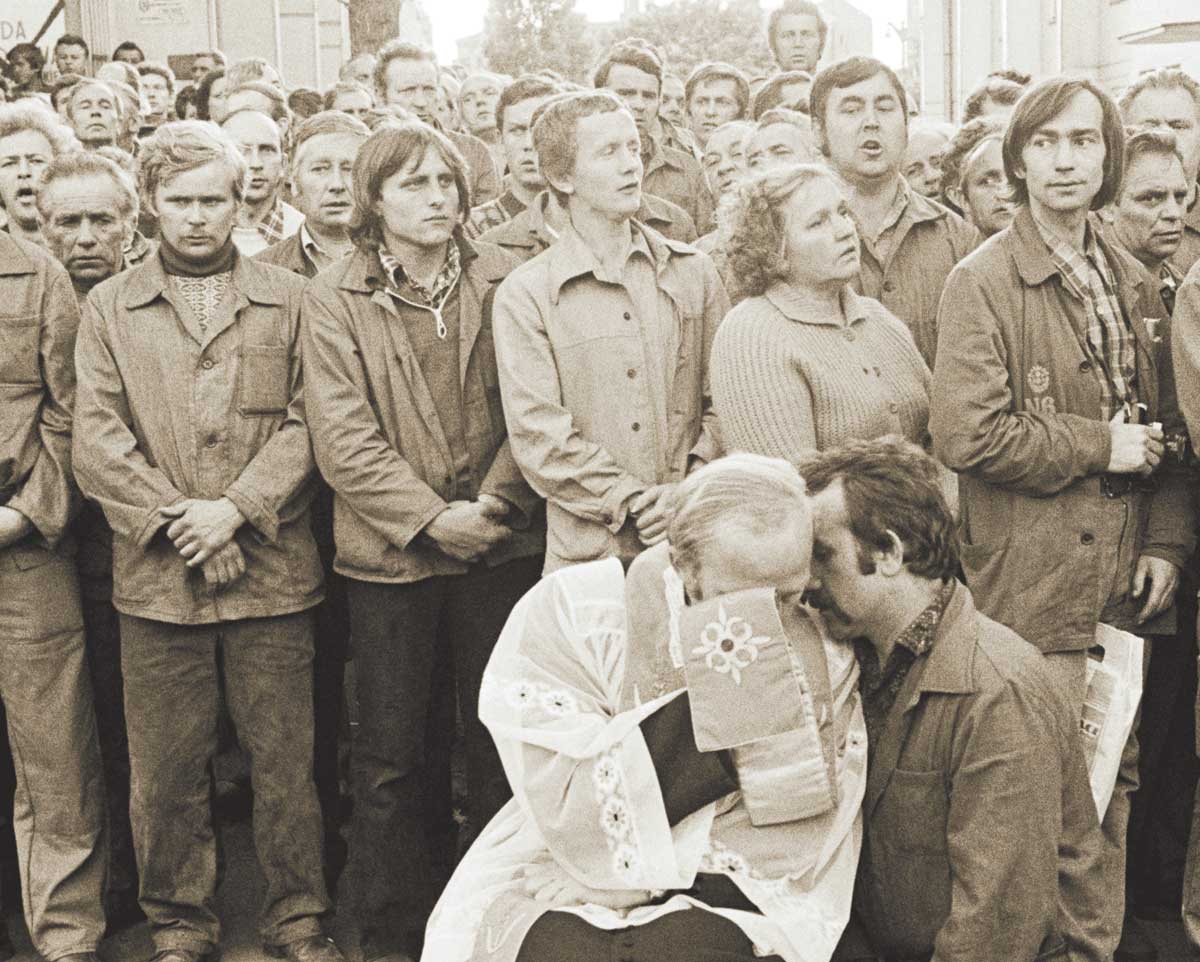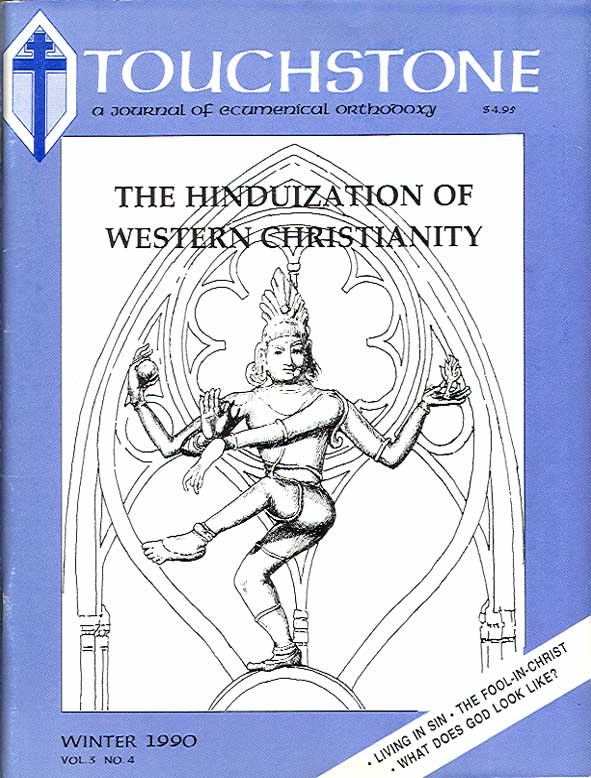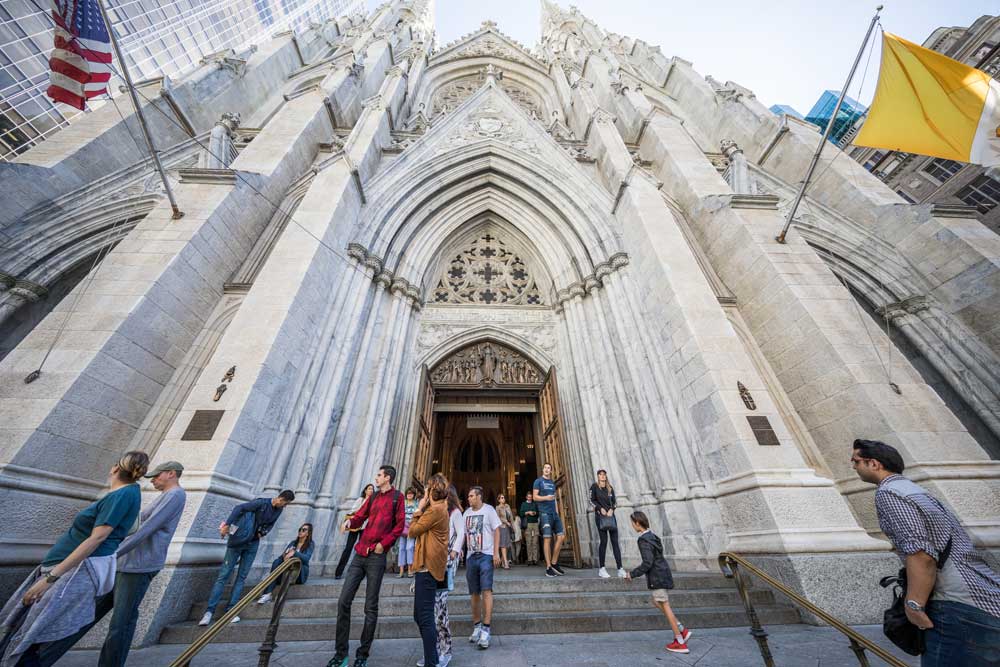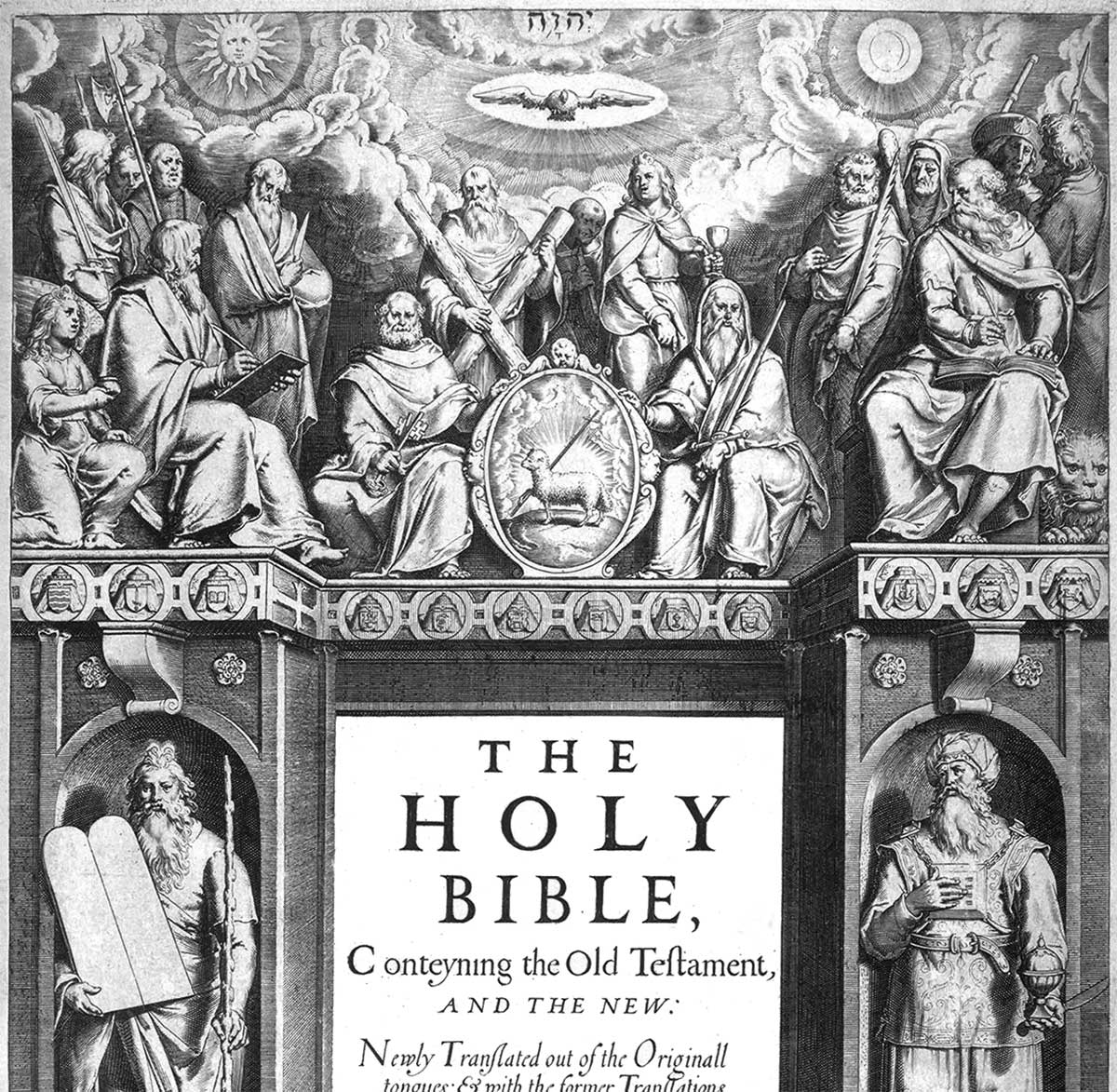Father in God
by John F. Harriman
“Reverend Father in God, we present unto you this godly and well-learned man, to be Ordained and Consecrated Bishop.”
This formula appeared in the first English Ordinal of 1550 and was repeated in successive Prayer Books for over four hundred years until the 1979 book of the Episcopal Church (U.S.A.), which substituted the form of address, “N., Bishop in the Church of God.” Apparently “Reverend Father in God” had seen its day. The change was made to accommodate the canon passed by General Convention in 1976 which opened ordination as priests and bishops to women, but I am not aware of any discussion of the rationale for this particular semantic choice. Perhaps it has seemed too insignificant to be worthy of comment. And yet, it seems to me that it signals a substantial change, with profound implications not only for the Anglican Communion but also for the wider ecumenical community, a change which calls for analysis.
Historical Background
The title “Father in God” has not been limited to bishops, nor for that matter, to ordained men. The word abbot means “father” (from the Aramaic abba, the word our Lord himself used in speaking of his Father), and was used in earliest monasticism. St. Benedict in his Rule emphasizes that the abbot is to be a father to his monks. St. Benedict was not ordained, so far as we know, and there is no indication in his Rule that he expected the abbot of the monastery to be ordained. (The position of abbot was a quasi order in itself.) In the Russian church, the staretz (literally, “old man”), a holy man sought out for spiritual direction, is called “father.” The custom of extending to priests the title “father” is relatively recent in history, particularly in Anglicanism, but is now widespread.
Still, the universal use of “father in God” naturally attaches to bishops. Though bishops have had many roles through the centuries—missionary, teacher, jurist, landlord, prince, scholar, and especially in our time, chief executive officer—the role of father in God has been constant. The only other role I can think of that compares with it in conveying that most intimate relation between bishop and people is “shepherd” (in Latin, pastor).
Church & Family
The correlate of a bishop (or priest) as father in God is the Church as family. While writing this article, I received a parish newsletter with its message from the rector, who wrote: “We are a family—a real family—not a family of blood but a family of baptism. As we are in Christ so we are brothers and sisters to one another. . . .” This is basic. The Church is essentially “family in God” and I would say that calling the bishop “father” traditionally points to the bishop’s essential relationship within that reality.
Within the family, relations are primary; that is, they are not so much defined or prescribed by any formal contract, such as a constitution or job description, as they are inherent in membership itself. The family is comprised of those persons with whom we are related simply by being born—father, mother, brother, sister, and in the “extended family” uncles, aunts, and cousins, both natural and adopted. Our role as father or mother, son or daughter, brother or sister, uncle or aunt, or cousin, is given to us.
In contrast to the primary relations within a family are the secondary relations we have with other people at work or in school or in society at large. These relations are not inherent but are prescribed by social convention or the need of the moment. Secondary relations exist in the Church, too. In order to do its business, the Church must have canons, vestries, councils, laws, rules, and regulations, all of which inevitably entail secondary relationships. The Church can sustain secondary relationships provided they do not replace primary relationships. If the Church became no more than an organization governed by rules and laws and procedures, it would be but one institution among others and no longer the family of God.
When all qualifications have been made, the truth remains that the Church is in essence a family. This is not a truth of moral appeal—that we ought to act like a family in the Church. It goes without saying that we ought to act like a family—that is, a good family. For the family should embody the qualities of love, warmth, nourishing, caring, sharing, loyalty, and mutual support, when too often in practice it is the scene of rivalry, conflict, and abuse. Nevertheless, a necessary characteristic of the family is that, for better or worse, its members are tied to each other by indissoluble bonds. Thus the underlying truth in God is not that we ought to act like a family, but that we are a family, any appearances to the contrary notwithstanding. As the rector says, we become members of the Christian family by baptism, in which we are granted “that which by nature [we] cannot have,” in the words of the older Prayer Book baptismal office, unfortunately lost in the 1979 rite. In the Church we have fathers and mothers (some of them formally godfathers and godmothers); we are brothers and sisters to each other. In the Church, as in the natural family, our essential relations with each other are primary.
The nature of the Church as family and the bishop as father is most visible in the liturgy. The family gathers for a meal with father at the head of the table. When the pope celebrates mass at an outdoor altar for a congregation of thousands, the fact that he is father at a family meal is not lost in the crowd. Pope John XXIII in particular had the endearing capacity to convey an immediate fatherly relation to every person. Soon after his election he said, “I have read about learned Popes, political Popes, diplomatic Popes, but the Pope is really only the Pope—the good shepherd defending truth and goodness.” To bring out the sense of the Italian, another rendering would be, “Papa is really only Papa.” The role of bishop as father has been kept more visible, perhaps, in parts of the Orthodox Church. A few years ago, the TV series on religion, “The Long Search,” included an unforgetable scene of an Orthodox bishop making his visitation in a Romanian village. He was greeted with reverence and affection, which he received as spontaneously as it was offered. It is still customary in Greece for the bishops to set aside time each day when anyone can come to see him. He is supposed to be as accessible to his people as a father is to his family.
Mother in God
The obvious change in the 1979 Ordinal would have been the alternative phrase, “Reverend Mother in God,” as parallel with “Reverend Father in God.” There is a venerable tradition of mothers in God in Church history, as is evident in the title abbess, which is practically as old as abbot. In the peculiar polity of the ancient Irish church, the spiritual jurisdiction vested in property ownership might well be exercised by an abbess, even over bishops, who were consecrated in large numbers without dioceses. In Britain the abbess St. Hilda founded a monastery for men and women at Whitby, where the important council of 664 met. In the Middle Ages abbesses exercised wide powers and were even vested with the same insignia as abbots. The title “mother superior” has been made familiar in modern religious orders. It is a commonplace of Church life that every parish has a woman, or more than one, who plays the role of mother and may have earned the informal title “mother superior.”
Retreat from Theology
Why was the obvious alternative, “Reverend Mother in God,” avoided, and the ambiguous phrase, “N., Bishop in the Church of God,” adopted instead? The choice, I submit, was more than semantic. It represents a retreat from an understanding of the Church as an organic family, with the bishop as father, to an understanding of the Church as an organization, with the bishop as an officer, who can be either a man or a woman. The cultural influence in this choice is obvious. Our society has developed professional roles which men or women can fill equally well. As a hospital chaplain, I participate in the professional culture willingly and with appreciation. I do not notice that it makes any difference whether the nurse or doctor or social worker I consult is a man or a woman. Indeed, hospital chaplaincy itself has been developed as a profession in which both men and women, ordained and unordained, can serve.
Our problem is that we have reduced Holy Orders to a profession among other professions. In doing so, we have compromised our commitment to the deeper reality of both the sacrament and the Church. The priesthood (whether episcopal or presbyteral) is more than a profession. The priest (bishop or presbyter) has received a sacramental character and a unique role which can only be understood and acted out in organic terms, such as father in the family, or shepherd of the flock. The Church is more than an institution composed of persons performing exchangeable functions. The Church is a body, a flock, a family, embracing the people of God in a network of enduring relationships.
I have heard the question put to a bishop, in one of those informal question and answer meetings, what should we call women priests? His answer was, “Call them Doctor, if appropriate, or Miss, or Ms., or Mrs., or call them by their first name; but don’t call them Mother—it’s the one title they don’t want.” That the word priestess gives offense is well known. We can be sure that shepherdess would fare no better.
In utilitarian secular speech it may not be important to make gender distinctions with words such as actress, waitress, or hostess for roles which can be acted by either men or women—though it seems to me that their loss is but another instance of the enthrallment of our language to the ideology of feminism. But in the theological tradition of “the Word,” where language is of first importance, careful distinctions are made to identify real differences, as between Father and Son and Holy Spirit, or between husband and wife.
As there is a difference between mother and father, it has to make a difference in the family of the Church whether a bishop is father in God or a mother in God. In ignoring the differences we have not so much revised our theology of Holy Orders, as we have abandoned theological considerations altogether in a capitulation to the prevailing nominalism of our culture. We have adopted the assumption that reality is what we name it. We arbitrarily declare that “the provisions of these Canons [for ordination] shall be equally applicable to men and women,” without dealing with the question whether in reality they can be equally applicable. We arbitrarily choose to say, “N., Bishop in the Church of God,” rather than, “Reverend Father in God,” without asking whether a change in words is a change in meaning.
Return to Theology
In the present context, mere agreement to use the title mother in God would be nominalism of the same kind. The cause of women’s ordination has advanced thus far on the crest of the contemporary feminist tide. In the eventual resolution of the question, current cultural influences can be no substitute for the broad perspective of the Bible, apostolic tradition, unvarying historic custom, ecumenical consensus, and theological meaning. Research in this broad perspective could be expected to show strong support for the ministry of women, which need never have been in question. The question to answer is, which and what kind of ministry? Whether the innovation of women as bishops and priests indistinguishable from men would find support in the broad perspective may be doubtful; but we could hope to find encouragement for renewing the role of mother in God in the Church’s life, even as we renewed our understanding and appreciation of the bishop’s role as father in God.
The Reverend John F. Harriman, Ph.D. is a priest of the Episcopal Diocese of Olympia, Washington, chaplain in the Veterans Affairs Medical Center in Seattle, and a pastoral counselor.
subscription options
Order
Print/Online Subscription

Get six issues (one year) of Touchstone PLUS full online access including pdf downloads for only $39.95. That's only $3.34 per month!
Order
Online Only
Subscription

Get a one-year full-access subscription to the Touchstone online archives for only $19.95. That's only $1.66 per month!
bulk subscriptions
Order Touchstone subscriptions in bulk and save $10 per sub! Each subscription includes 6 issues of Touchstone plus full online access to touchstonemag.com—including archives, videos, and pdf downloads of recent issues for only $29.95 each! Great for churches or study groups.
Transactions will be processed on a secure server.
more from the online archives

19.10—December 2006
Workers of Another World United
A Personal Commemoration of Poland’s Solidarity 25 Years Later by John Harmon McElroy
calling all readers
Please Donate
"There are magazines worth reading but few worth saving . . . Touchstone is just such a magazine."
—Alice von Hildebrand
"Here we do not concede one square millimeter of territory to falsehood, folly, contemporary sentimentality, or fashion. We speak the truth, and let God be our judge. . . . Touchstone is the one committedly Christian conservative journal."
—Anthony Esolen, Touchstone senior editor








